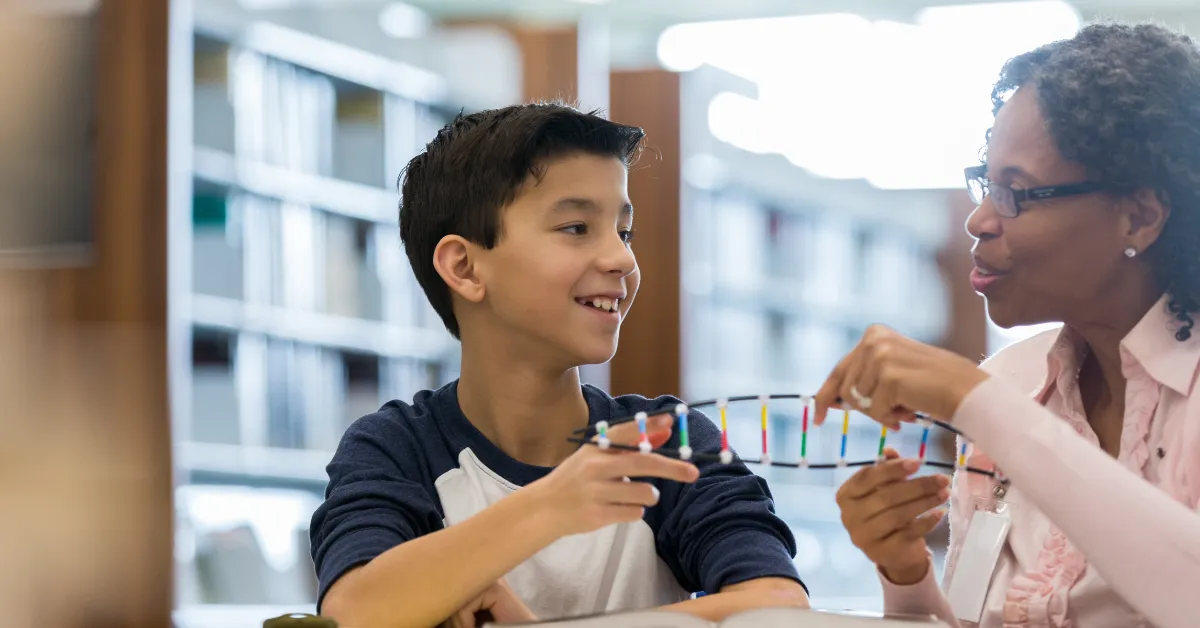Here’s why we have to engage students in career readiness learning beginning in middle school
Why Middle School: Challenging an Outdated Paradigm with a New Approach
The model has remained steady for decades: wait until kids are juniors or seniors in high school to get them thinking seriously about what education-to-career pathways they may want to pursue after graduation.
But let’s put ourselves in the shoes of a high school upperclassman for a moment. You have one or two years to make a decision that will alter the course of the rest of your life. You have only a vague idea of the number and variety of career paths that exist. You’re likely being told that a four-year college degree is the only means to a successful and fulfilling career after graduation. And you have to begin that college application process soon if you want any chance of getting in.
But wait — is this really what I want? Or am I just doing it because it’s all I know?
The pressure-cooker mentality of having students make such consequential decisions with very little information, right before being thrust out into the real world, is failing our young people.
At the middle school age, kids are exploring and trying new things — and aren’t as affected by what their peers think. The clock isn’t ticking down quite so quickly, so there’s significantly less pressure, allowing kids the freedom to explore and learn without the heavy burden of expectation on their shoulders.
By introducing career readiness education in middle school, we allow kids the ability to determine not just what jobs they might want in the future, but who they are. What makes their eyes light up? What are they curious to try? What can they talk about for hours?
This type of exploration is critical if we want kids to make informed choices about life after high school. And it starts with changing the way we talk to students about their future plans, starting in middle school.
We often ask kids the loaded question: What do you want to be when you grow up?
That framing tends to be a source of angst for young people. It’s an oversimplified question that will inevitably produce an oversimplified answer, based on a very limited number of occupations a middle schooler might be aware of.
What if, instead, we asked questions like:
What are you passionate about?
What do you want to give to society?
What are you capable of?
By prioritizing these kinds of questions, we’re best equipped to help kids make informed choices based on what makes them tick.
Middle School Career Exploration Leads to Prepared Confidence
A study by ASA revealed that 80% of middle schoolers say they’re already thinking seriously about what they want to do when they grow up, and 87% are interested in ways to match their skills and interests with potential careers.
When looking at the results from middle school career exploration programs that ASA funded in the last few years, the results are promising: students who participated were 20% more likely to learn about and practice in-demand workplace skills like creativity and problem-solving than those who did not, and were 20% less nervous about the future after engaging in career-focused learning. On top of that, 65% of middle school students in career exploration programs said they came away with an understanding of how to search for a career that’s a good fit for their skills and interests.
Imagine being able to step into high school with a prepared confidence that flows from that deeper understanding of yourself, having been given the chance to explore a number of options in middle school?
I’m now entering high school with a clear idea of what I might want to do after graduation — and the path(s) I can take to get there, degree or no degree.
Why It’s More Important than Ever to Engage Middle School Students in Career Learning
Over half of Gen Z students said they were not planning to attend a four-year college, according to a CNBC report. To further complicate matters, 65% of students we surveyed felt there was too much risk associated with choosing the wrong non-degree path.
But what if we made kids aware of their options — all their options — earlier on?
What if we invested in ensuring students are prepared to make confident, informed decisions about their plans after high school — by starting before they even get to high school?
What if we took the immense pressure off the shoulders of students in their final days of high school, and instead wove career learning into the fabric of their education starting in middle school?
What we’d see is a generation that’s making decisions based on what they want, rather than what is prescribed to them — and a workforce that’s brimming with top-tier talent from a variety of backgrounds.
Are you prepared to help us set the next generation of leaders up for success?
Middle School-Focused Organizations and Resources
As part of our mission to expand awareness of all postsecondary pathways as well as access to quality career readiness learning opportunities, ASA is proud to partner with and fund some incredible organizations specializing in this work. Here are a few we’d like to highlight for more resources and best practices:
The Association for Middle Level Education (AMLE)
AMLE focuses on supporting and empowering middle school educators nationwide to align on a shared vision and tap into their students’ potential to create a generation of future-ready leaders.
Topical resources:
- STEM Learning Across Disciplines: Embedding STEM in Every Classroom, so Every Student Can be Future-ready
- Career-focused Courses: An Authentic Path to Social and Emotional Learning in the Middle Levels
- Research to Practice: Implementing Genius Projects in the Middle Grades
Apprentice Learning provides work-based learning experiences (like internships and apprenticeships) for students in eighth grade, particularly focusing on underserved and underrepresented communities.
Topical resources:
- Apprentice Learning Hosts Redefining Success: A Panel on Preparing Youth for the Workforce
- A Blueprint for the Future
- Reflecting on 10 Years of Service
BPL runs a network of schools that specialize in unlocking students’ unique talents and interests. Additionally, BPL is constantly innovating to develop a suite of initiatives that facilitate work-based learning experiences beginning in middle school and other exciting learning opportunities beyond the classroom.
Topical resources:
- ImBlaze: BPL’s platform that pairs students with curated internship opportunities that are then monitored by schools to track attendance and ensure compliance as well as student success.
- B-Unbound: Building on the success of ImBlaze, B-Unbound focuses on opportunities outside of the school environment, to allow young people to build peer communities as well as establish relationships with caring adults in fields they’re interested in pursuing.




